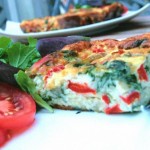This week, read about how we overestimate exercise intensity, 70 year olds getting fit playing soccer, the accuracy of activity trackers, red meat and breast cancer risk, and more.
 It’s Never Too Late to Get Fit or Play Games
It’s Never Too Late to Get Fit or Play Games
Though some may think that the intensity, speed, turns, agility, and skills needed for soccer are the realm of the young (or retired football players), a series of new studies showed how this great game can benefit older people. Researchers at the Copenhagen Centre for Team Sport and Health showed that playing football (soccer) twice a week markedly improved fitness and health in untrained elderly men. After only 4 months, the men improved their VO2 max, muscle function, and bone mineral density. Researchers compared the football training group to a strength training group and an inactive control group. Though the strength training group showed some benefits, football was superior to strength training for improvements in aerobic fitness, muscle function, and bone density. (Scandinavian Journal of Medicine & Science in Sports).
 Overestimating How Hard We Exercise
Overestimating How Hard We Exercise
People aren’t very good judges exercise intensity, according to a new study, with most people underestimating moderate and vigorous activity (i.e., they don’t exercise hard enough). Exercising at higher intensities (that make you breathe hard and break a sweat) has greater health benefits, and this is reflected in federal guidelines for physical activity (about 150 minutes moderate-vigorous activity/week – see US guidelines here and Canadian guidelines here).
When asked to walk at a moderate-intensity pace (after reviewing the guidelines), York University researchers showed that only 25% of study volunteers reached a moderate intensity level. These results are concerning, since only 15 to 20% of Americans and Canadians report meeting the physical activity guidelines (and this new study suggests that this percentage is likely much lower). (PLOS One, May 2014).
- What is moderate or vigorous activity? Your heart rate should be about 64-76% of your maximum for moderate activity (you can talk but not sing; walking like you’re trying to catch a bus or getting indoors out of the rain), and between 77-90% for vigorous activity (you’re breathing so hard you can say a few words, but not sentences).
- Is vigorous activity safe for everyone? Seems the benefits outweigh the risks, likely even for older people and cardiac patients , as Alex Hutchinson explains.
Of course, it’s important to remember that ANY exercise you do, even below moderate levels, is good for your health!
 How Accurate Are Fitness Band Activity Trackers?
How Accurate Are Fitness Band Activity Trackers?
Fitness bands/activity monitors are small gadgets that monitor your activity. Though previously only used by researchers, these trackers are becoming popular and motivating tools for anyone to track how much they move (or don’t move!). (I tested a fitbit for a research study I was involved with, and was impressed with the ease of use and feedback . . . desk jobs make us sit a lot!). Researchers from Iowa State University tested the accuracy of 8 popular models: they found that most of the trackers provided reasonably accurate estimates (within 10 to 15 percent) of calories burned, with the BodyMedia FIT and Fitbit leading the rankings. (Medicine & Science in Sports & Exercise).
- One benefit of trackers is that they are easy to wear (they fit in a pocket or around your wrist), so you can wear them all day and get a good snapshot of your daily activity (including intensity level) and sedentary behavior. If you want immediate feedback during an exercise session, however, a heart-rate monitor might be a better choice.
- If you’re curious about activity monitors, this expert provides a pretty good review of the fitbit flex. And for Apple fans, it looks like an Iwatch health tracker is coming out soon.
Red Meat May Raise Breast Cancer Risk
A new study by Harvard University researchers links red meat intake to breast cancer risk. Compared to women who ate one serving of red meat a week, those who ate 1.5 servings/day had a 22% higher risk of breast cancer (and each additional daily serving increased risk by another 13%). The study used data from the Women’s Health Study, following 89,000 women for over 20 years. These results add weight to current guidelines to limit red and processed meat to reduce cancer risk. Researchers also found that replacing a red meat with other dietary sources of protein (fish, legumes, nuts and poultry) lowered breast cancer risk by 14 %. (British Medical Journal, June 2014).
 RECIPE – Mediterranean Frittata. Looking for more protein for breakfast? Try this frittata. It’s delicious hot or cold, and leftovers make a great snack, lunch, or supper. This is a very nutritious dish that is low in calories, and rich in vegetables and good quality protein.
RECIPE – Mediterranean Frittata. Looking for more protein for breakfast? Try this frittata. It’s delicious hot or cold, and leftovers make a great snack, lunch, or supper. This is a very nutritious dish that is low in calories, and rich in vegetables and good quality protein.
Other links of interest this week:
- Statin use associated with less physical activity (JAMA Internal Medicine, June 2014); Good commentary: Statins and Activity: Proceed with Caution (Beatrice Golomb, UC San Diego)
- Paleo is the Scientology of diets (James Fell)
- Exercise Helps Your Gut Bacteria: Amazing, Overblown, or Plain Incorrect? (Alexandra Sifferlin, Time Magazine)
- How to quack-proof yourself against pseudoscience (Amy Tuteur)
- Fruit Juice Vs. Soda? Both Beverages Pack In Sugar, Health Risks (Journal of Nutrition)
- Is a raw food diet good for you? (Tim Crowe)
- No, Dietary Guidelines Are Not Making Us Sick (Colby Vorland)
- Why we need more women to coach girls (Andrea Montalbano, NY Times)
See more Weeks in Food, Health, and Fitness